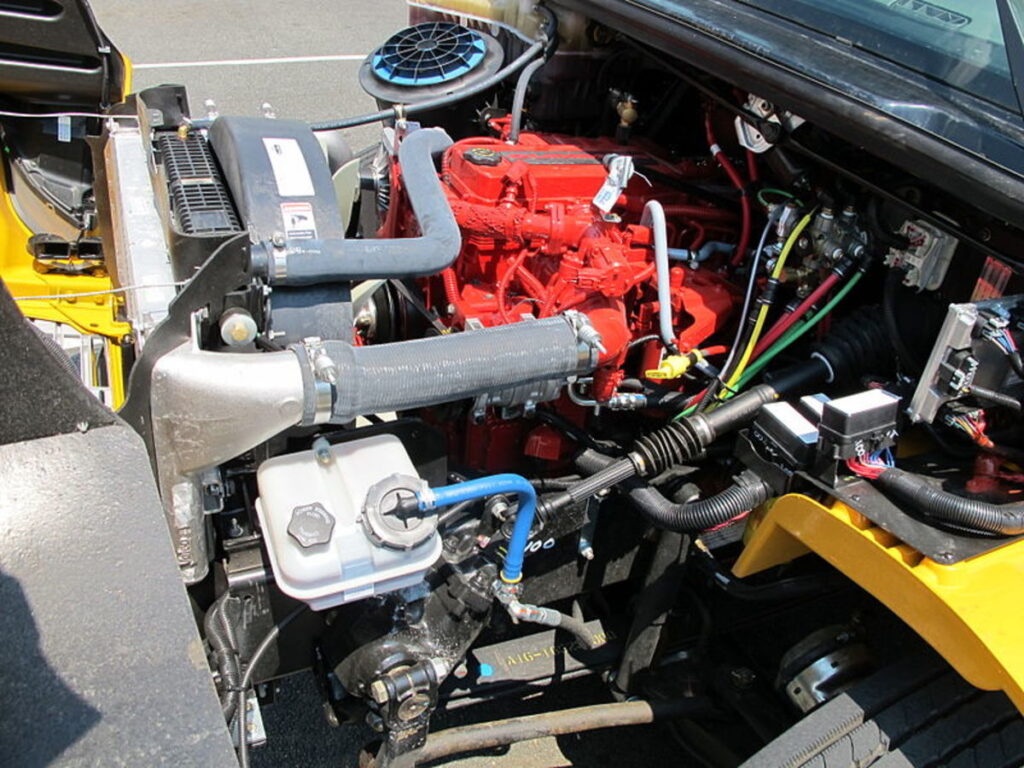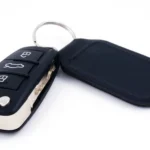
Nissan Qashqai Juddering When Accelerating: Causes, Fixes, and Expert Diagnosis

Experiencing your Nissan Qashqai juddering when accelerating can be frustrating and concerning. Whether it’s a mild vibration, a shudder at low revs, or a full-blown hesitation under throttle, this issue often indicates an underlying mechanical or electronic fault. In this comprehensive guide, we’ll explore every possible cause, how to diagnose the problem, and the best solutions to restore smooth acceleration.
- 🚗 Common Symptoms of Juddering When Accelerating
- ⚙️ 1. Faulty Ignition Components
- ⛽ 2. Fuel Delivery Problems
- 🌬️ 3. Air Intake and Sensor Issues
- 🧭 4. Transmission or Clutch Problems
- 🔥 5. Engine Mount Problems
- 🌡️ 6. Blocked Catalytic Converter
- ⚡ 7. ECU or Sensor Faults
- 🛠️ 8. Dirty EGR Valve (Diesel Qashqai)
- 💨 9. DPF Regeneration or Blockage (Diesel Only)
- 🧰 10. Drivetrain and Wheel Issues
- 🧩 When to Seek Professional Help
- 🧠 Expert Tip: Use an OBD-II Scanner Regularly
- ✅ Conclusion
🚗 Common Symptoms of Juddering When Accelerating
Before diving into causes, it’s essential to recognize what “juddering” feels like:
- Vibrations or shaking when accelerating from a stop or low speed
- Hesitation or “stuttering” when applying throttle
- Jerking sensation through the steering wheel or floor
- Noticeable shudder when shifting gears (manual or automatic)
- Check engine light occasionally flashing during acceleration
These symptoms often appear gradually but can worsen if ignored.
⚙️ 1. Faulty Ignition Components
Worn Spark Plugs
Spark plugs ignite the fuel-air mixture in each cylinder. When they’re worn or fouled, combustion becomes uneven — causing the engine to misfire and judder under load.
Fix: Replace spark plugs every 30,000–60,000 miles (depending on your engine type). Always use OEM-spec plugs (e.g., NGK or Denso for Qashqai petrol models).
Failing Ignition Coils
Each spark plug relies on a coil to deliver a high-voltage spark. When one coil fails, the affected cylinder misfires, leading to rough acceleration and juddering.
Fix: Test each ignition coil with an OBD-II scanner or by swapping coils between cylinders to isolate the fault.
⛽ 2. Fuel Delivery Problems
Clogged Fuel Injectors
Dirty injectors can’t atomize fuel correctly, leading to uneven combustion and jerky acceleration.
Fix: Use a professional injector cleaner or have them ultrasonically cleaned. If the issue persists, replacement may be necessary.
Weak Fuel Pump or Blocked Fuel Filter
A failing fuel pump or clogged filter restricts fuel flow to the engine, particularly noticeable during acceleration when demand increases.
Fix: Test fuel pressure at the rail using a gauge. If pressure is below factory spec, inspect or replace the pump and filter.
🌬️ 3. Air Intake and Sensor Issues
Dirty or Faulty MAF Sensor
The Mass Air Flow (MAF) sensor measures incoming air to determine the right fuel mixture. Dirt or sensor failure can cause poor throttle response and juddering.
You may be interested in reading Common Dacia Sandero Stepway Problems and Symptoms (Full Guide)
Common Dacia Sandero Stepway Problems and Symptoms (Full Guide)Fix: Clean the MAF sensor with dedicated cleaner spray or replace it if readings remain erratic.
Blocked Air Filter
A clogged air filter restricts airflow, reducing engine power and smoothness.
Fix: Replace the air filter every 12,000–15,000 miles, or more frequently in dusty conditions.
🧭 4. Transmission or Clutch Problems
Manual Transmission: Worn Clutch or Flywheel
If your Qashqai judders when pulling away, especially in first gear, a worn clutch plate or dual-mass flywheel could be to blame. Heat spots, oil contamination, or surface wear can cause clutch engagement to become uneven.
Fix: Replace the clutch and inspect the flywheel for damage. Use a complete clutch kit replacement to prevent recurrence.
Automatic or CVT Transmission Issues
The Continuously Variable Transmission (CVT) used in many Qashqais can develop juddering if the transmission fluid is old or the belt/cone surfaces are worn.
Fix: Change the CVT fluid using only Nissan NS-3 fluid. If judder persists, a reprogram or replacement of the transmission control module (TCM) may be required.
🔥 5. Engine Mount Problems
Worn or Broken Engine Mounts
Engine mounts absorb vibrations and keep the engine aligned. When they deteriorate, you’ll feel vibration and shudder during acceleration as the engine rocks excessively.
Fix: Visually inspect for cracks or collapsed rubber. Replace all worn mounts in pairs for balanced performance.
🌡️ 6. Blocked Catalytic Converter
A partially blocked catalytic converter restricts exhaust flow, creating backpressure that robs the engine of power. This causes the car to struggle and judder under load, especially at higher speeds.
Fix: Use a backpressure test or infrared thermometer to check for excessive heat before and after the converter. If confirmed, replace the catalytic converter.
⚡ 7. ECU or Sensor Faults
Faulty Throttle Position Sensor (TPS)
A bad TPS sends erratic signals to the ECU, confusing throttle input and causing uneven acceleration.
You may be interested in reading Common Dacia Sandero Stepway Problems and Symptoms (Full Guide)
Common Dacia Sandero Stepway Problems and Symptoms (Full Guide) Dacia Duster Horn Relay and Fuse Guide (2015 Model)
Dacia Duster Horn Relay and Fuse Guide (2015 Model)Fix: Use an OBD-II tool to monitor live TPS data; replace if readings fluctuate irregularly.
Crankshaft or Camshaft Sensor Failure
Incorrect timing signals from these sensors can cause jerky engine response or misfires under acceleration.
Fix: Scan for error codes like P0335 (crank sensor) or P0340 (cam sensor) and replace faulty units.
🛠️ 8. Dirty EGR Valve (Diesel Qashqai)
The Exhaust Gas Recirculation (EGR) valve recirculates exhaust gases to reduce NOx emissions. When it clogs with soot, it disrupts airflow and leads to juddering and hesitation, especially at low revs.
Fix: Remove and clean the EGR valve using carb or EGR cleaner. For severe buildup, replacement may be necessary.
💨 9. DPF Regeneration or Blockage (Diesel Only)
A partially blocked Diesel Particulate Filter (DPF) can cause rough acceleration and engine vibration as exhaust flow is restricted.
Fix: Perform a forced regeneration via diagnostic tool or long highway drive at 2,000+ RPM for 20 minutes. If the DPF is saturated, replacement may be required.
🧰 10. Drivetrain and Wheel Issues
Uneven Tyre Wear or Wheel Imbalance
Sometimes, juddering under acceleration isn’t from the engine but from the wheels. Unbalanced tyres or worn driveshafts can create vibrations that worsen with speed.
Fix: Check for wheel balance, damaged CV joints, or worn suspension bushes.
🧩 When to Seek Professional Help
If the problem persists after basic maintenance (filters, plugs, fluid changes), it’s time to visit a qualified Nissan technician. They can:
- Perform advanced diagnostics using Consult III+ software
- Test live data for misfire counts and fuel trims
- Conduct compression or leak-down tests
- Evaluate transmission and drivetrain components
🧠 Expert Tip: Use an OBD-II Scanner Regularly
Investing in an OBD-II reader allows you to catch sensor or ignition problems early. Codes like P0300 (random misfire), P0171 (lean mixture), or P0420 (catalytic efficiency) often point directly to the cause of juddering.
✅ Conclusion
When your Nissan Qashqai judders during acceleration, the culprit could range from simple spark plug wear to complex CVT transmission issues. By methodically checking ignition, fuel, air, and drivetrain components, you can quickly isolate and fix the problem. Regular servicing, quality fuel, and timely filter replacements will ensure your Qashqai maintains its signature smooth, confident drive.
You may be interested in reading Common Dacia Sandero Stepway Problems and Symptoms (Full Guide)
Common Dacia Sandero Stepway Problems and Symptoms (Full Guide) Dacia Duster Horn Relay and Fuse Guide (2015 Model)
Dacia Duster Horn Relay and Fuse Guide (2015 Model) Dacia Sandero Key Fob Not Working: Causes, Fixes, and Expert Solutions
Dacia Sandero Key Fob Not Working: Causes, Fixes, and Expert SolutionsIf you want to know other articles similar to Nissan Qashqai Juddering When Accelerating: Causes, Fixes, and Expert Diagnosis you can visit the category Common Problems.
Deja una respuesta






More content of your interest